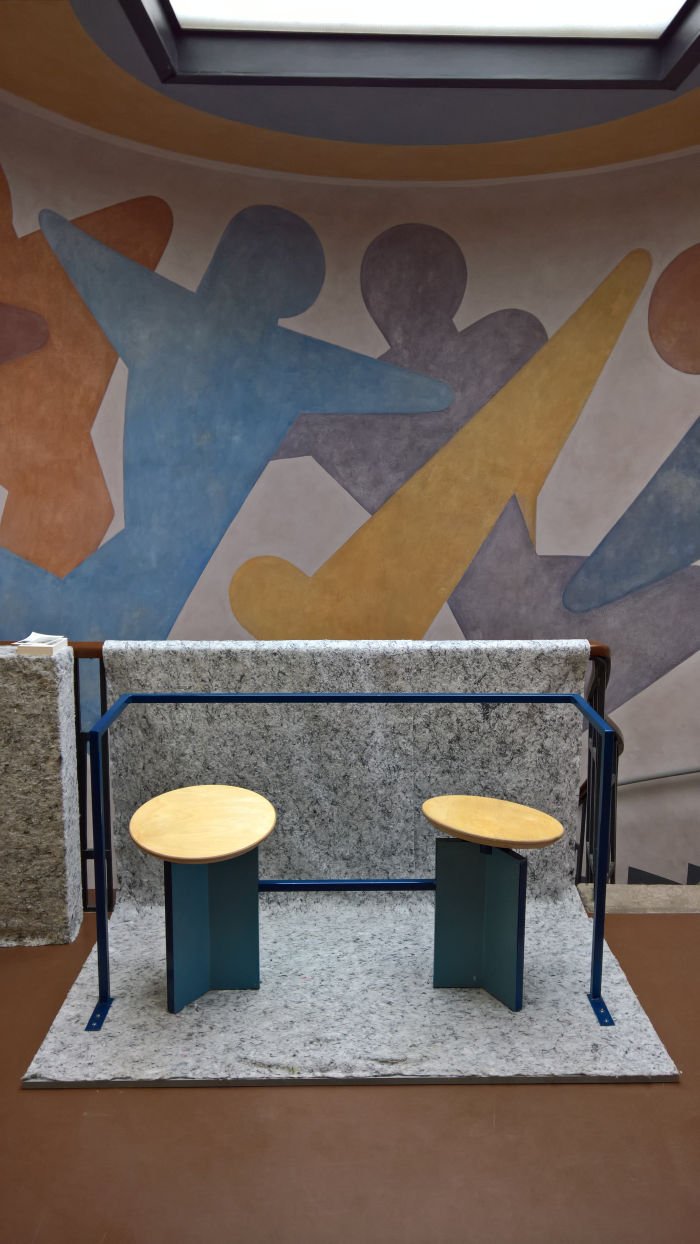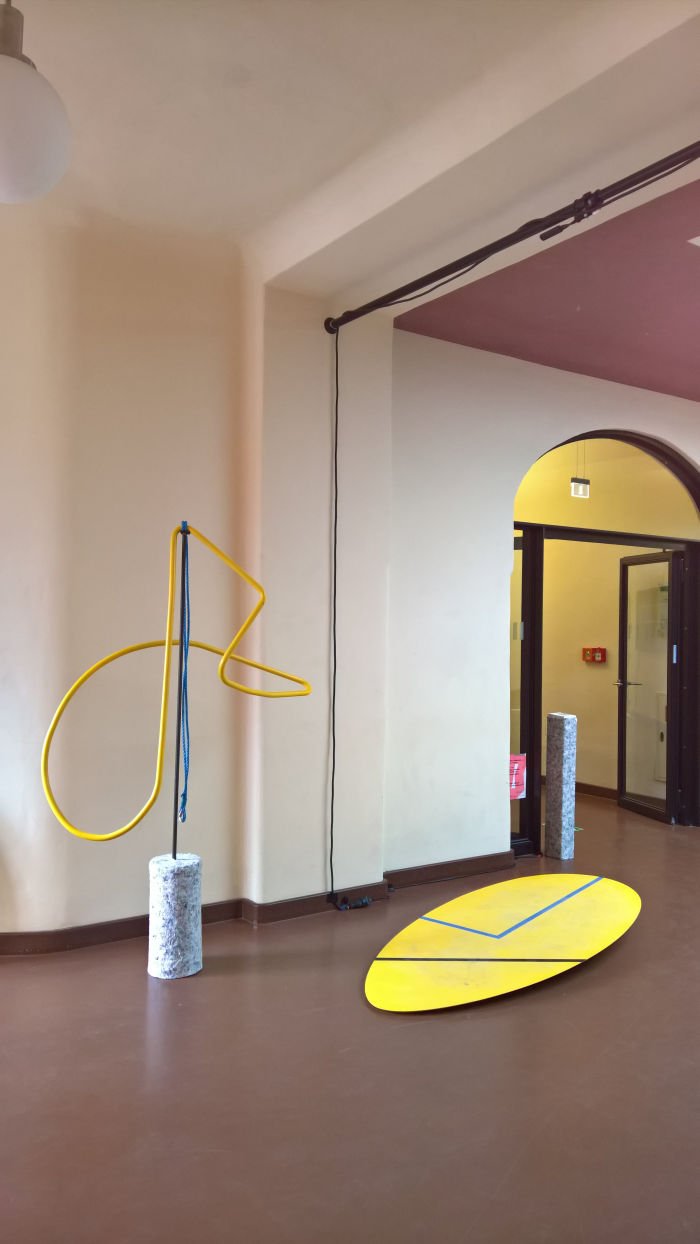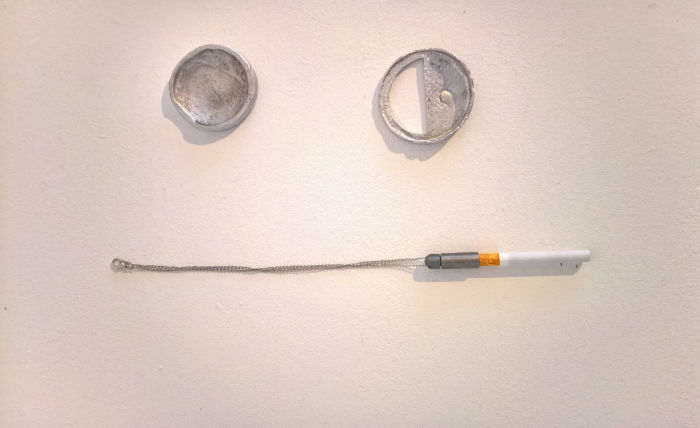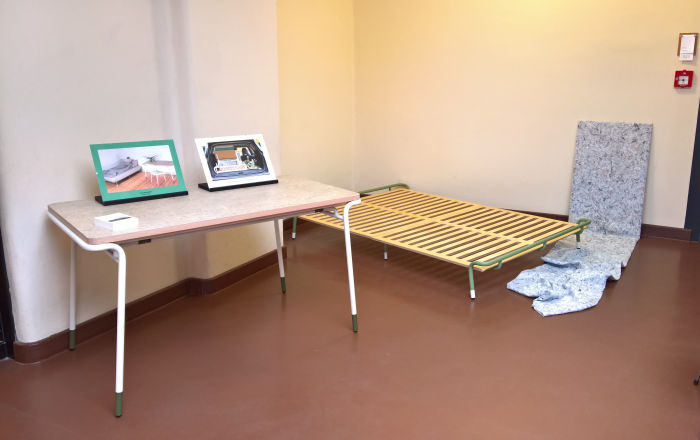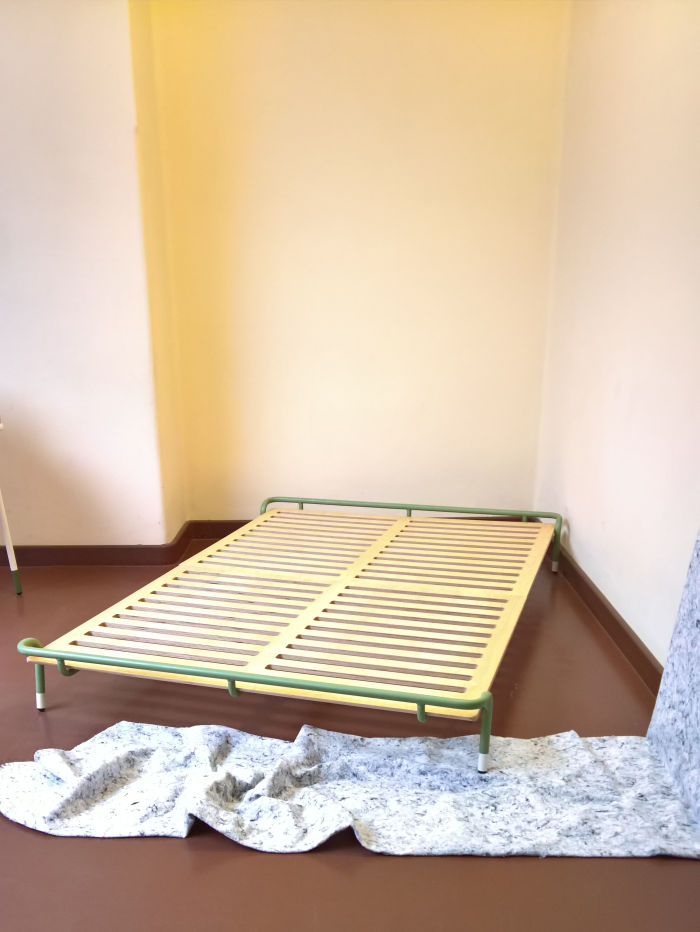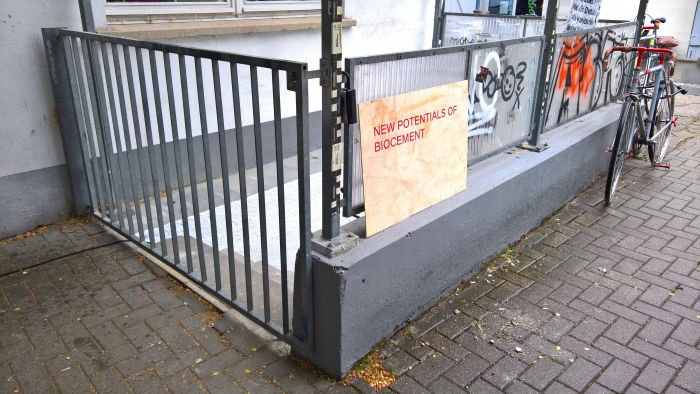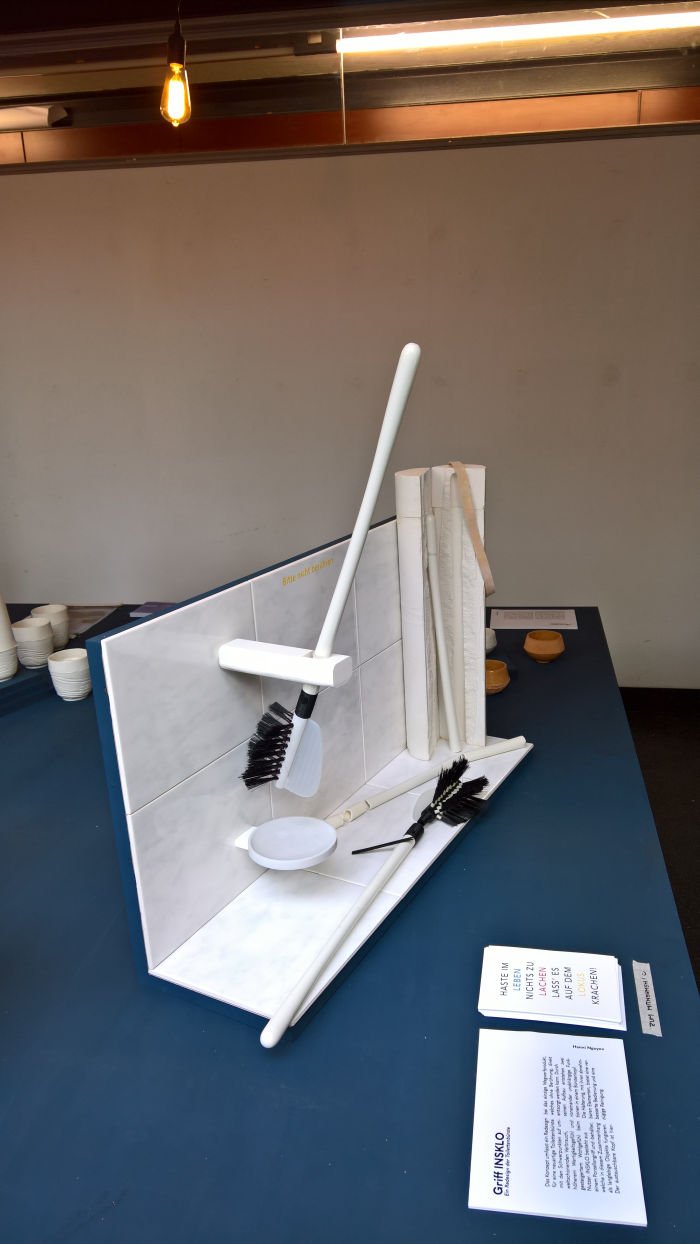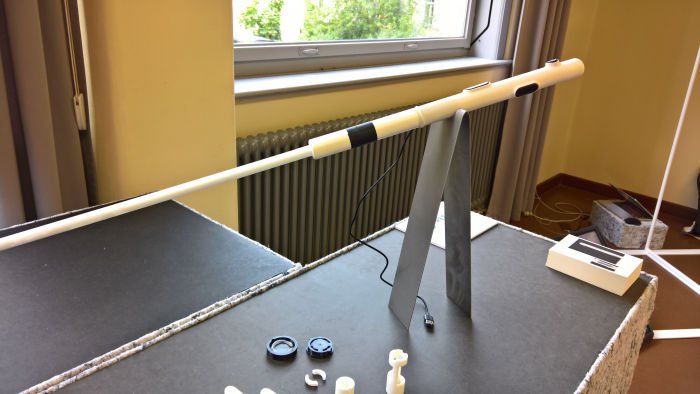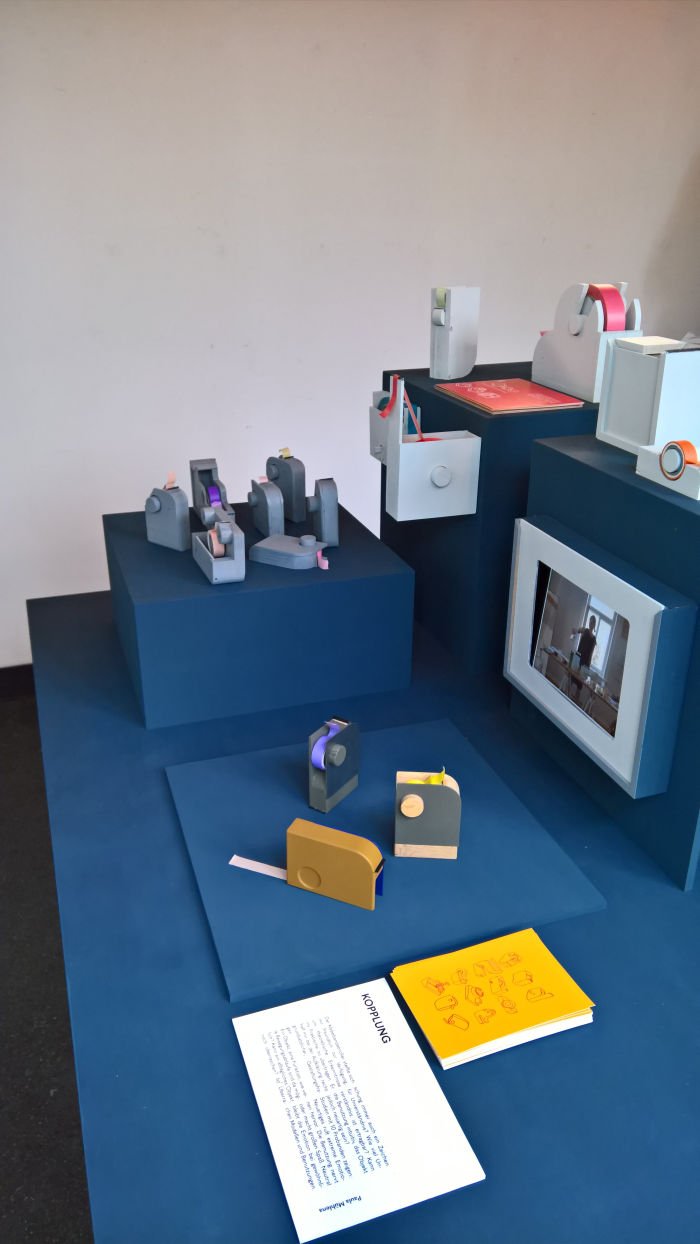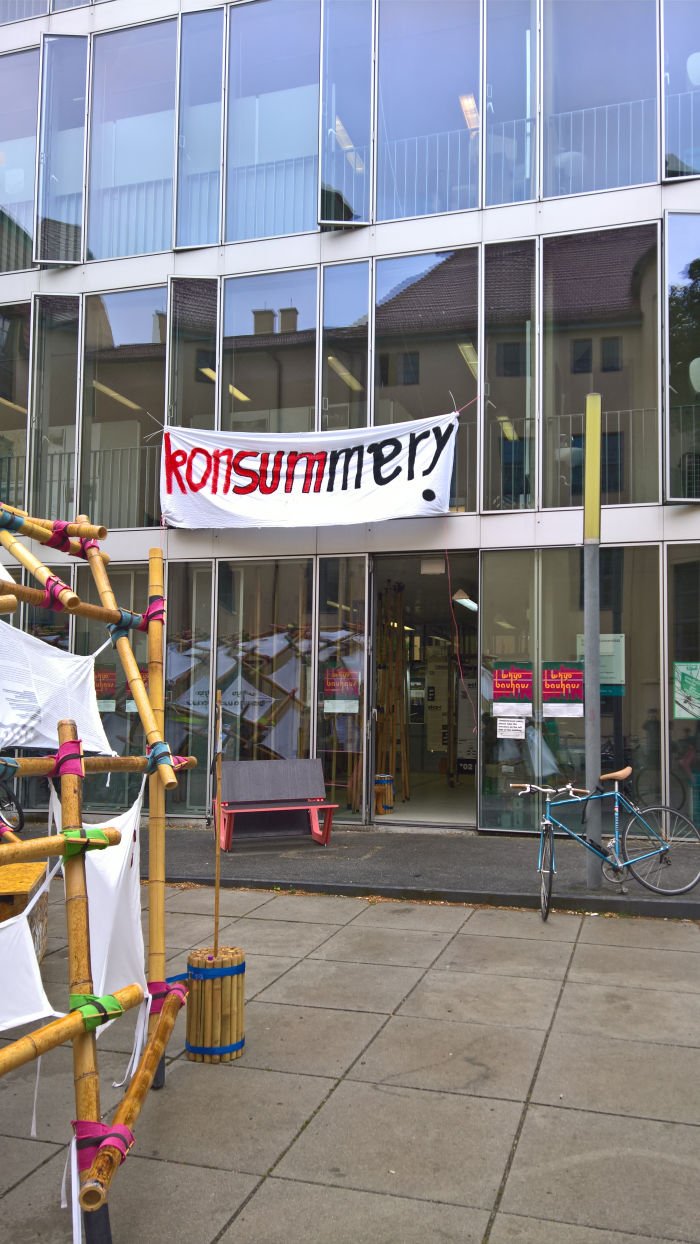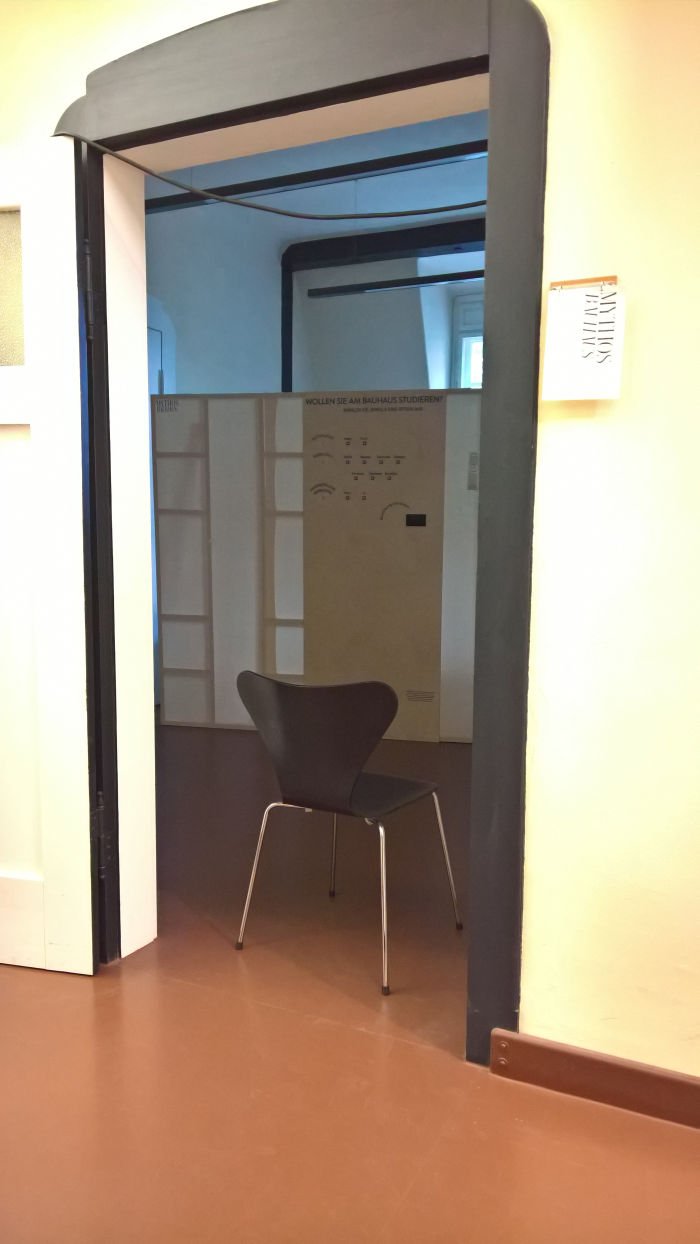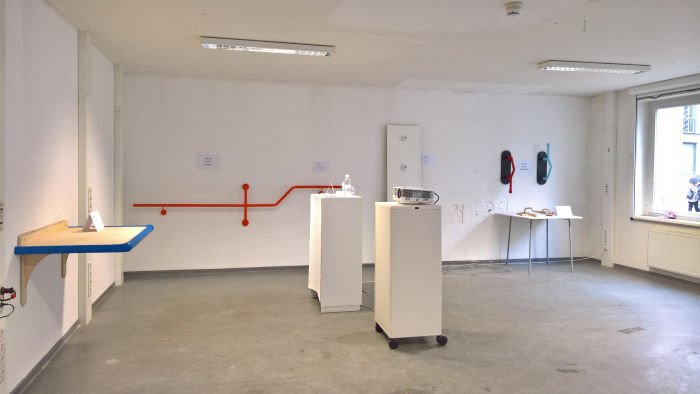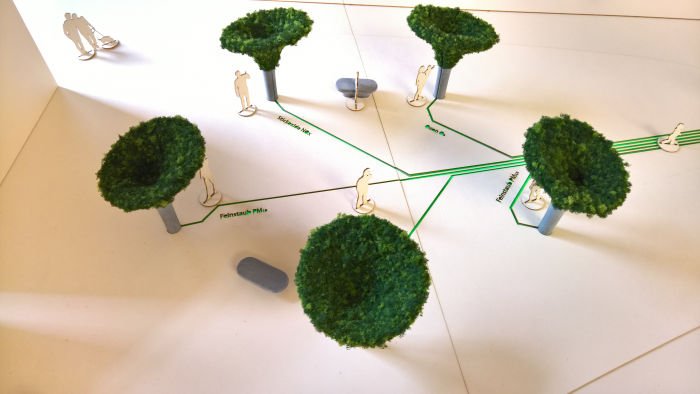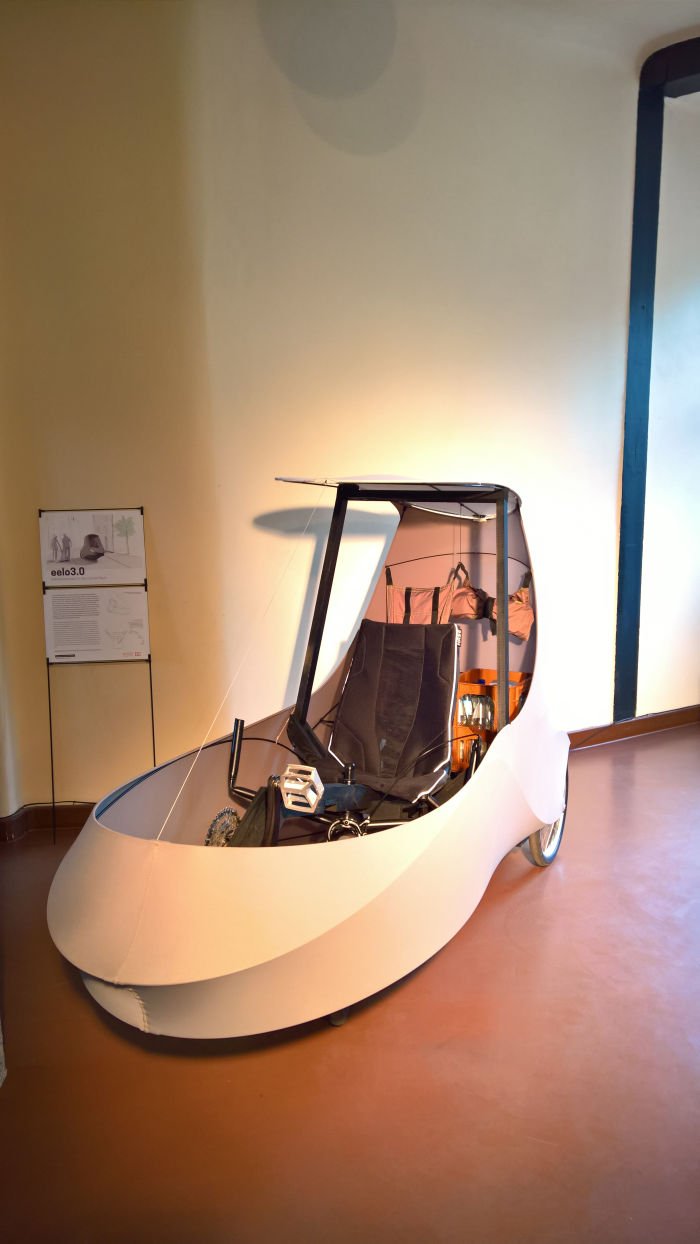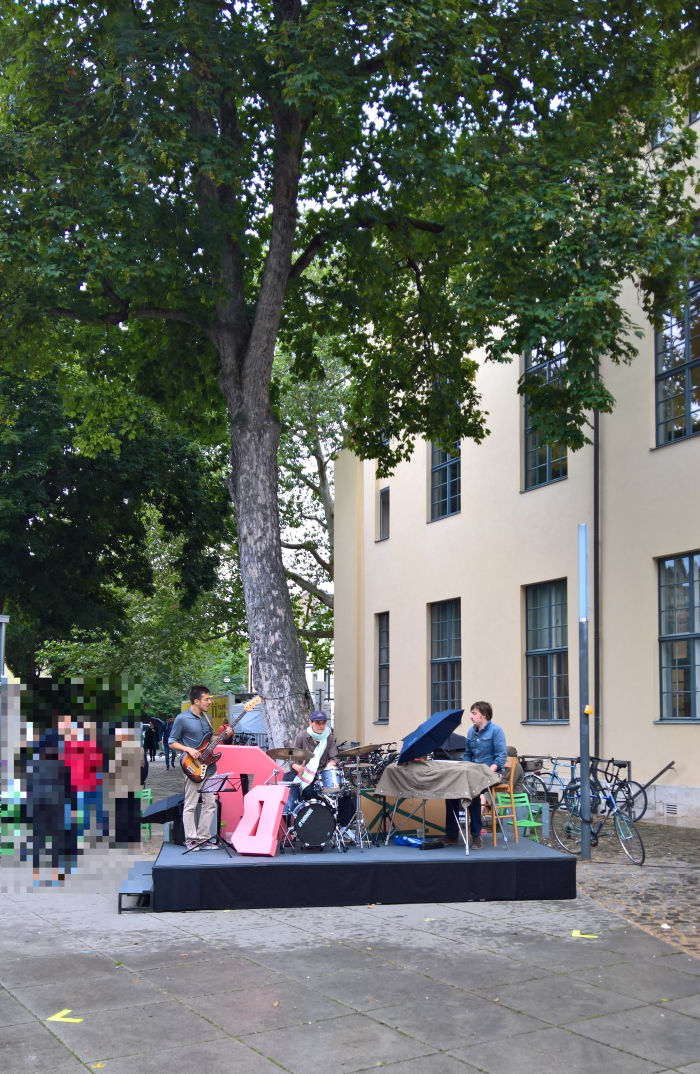It's almost impossible to reflect on design education without reflecting on Bauhaus. Especially this year. And especially when a tour of design school summer exhibitions takes you to Sachsen-Anhalt and Thüringen, to those (contemporary) German States where for 100 years Bauhaus both began and found its de facto end.
And while there will be time in coming posts for those reflections on the Gropius school and the developments of the century past, the focus of our 2019 #campustour visits to Sachsen-Anhalt and Thüringen, specifically Halle and Weimar, is and was the contemporary students and the work realised in the year past.
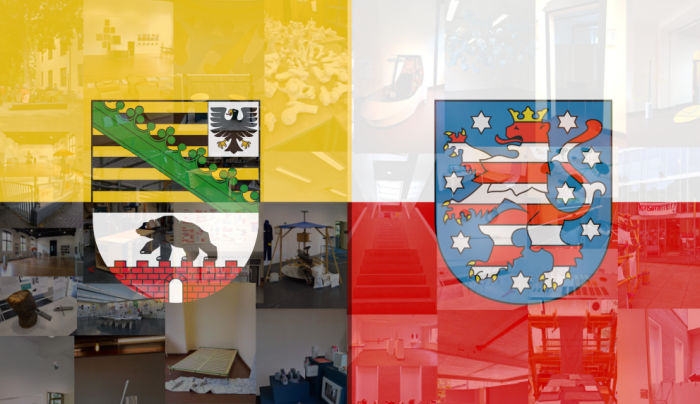
The inevitability of change, and for the futility of resisting that inevitability, was brought home to us in a most unequivocal manner at the Burg Giebichenstein Kunsthochschule Halle 2019 Rundgang: since time immemorial a chair has been used during the annual Rundgang summer exhibition to hold open a door in the institute's so-called Gold Building, so-called because it is a gold building. One leg over the bannister, one over the door handle, a joyously, nonchalantly, low-tech solution, a near perfect example of the Gambiarra, the quick, improvised, fix. And a constant in our lives replaced by a rational wedge of wood. High-tech solutions will always supersede more primitive, and in many regards one must expect, nay demand, such at a design school. Yet it still left us a little melancholic for those simpler days of yore before design thinking was replaced by design dogma.
Fortunately the 2019 Rundgang itself followed the familiar pattern, presenting as it did a mix of graduation projects and the results of the numerous semester courses, whereby we spent most time with the later. And with courses such as the first semester class Construct/Deconstruct a Cube which neatly illustrated that despite the best efforts of the postmodernists considerations on and experimentation with basic geometry remain at the core of a lot of design eduction; that fundamental courses can also be more abstract being underscored in Phänomena [phenomenons] which challenged students to develop an object, spatial scenario, etc, that embodied and visualised one of a number of terms, including haziness, rhythm, distance or identity; while in context of an independent project undertaken with Professor Andine Müller from the Hochschule für Medien Kommunikation und Wirtschaft Berlin, So-jin Park, Sophie Pischel, Mena Standhaft and Lena Würsching proposed 12 conventions to ensure quality in online journalism, including variety, originality and self-criticism. ✔ ✔ ✔. And a project which very competently elucidated the (mundane) practical differences between online and offline media, and the (anything but mundane) challenges those differences pose both for the creators of online media and us consumers.
Responding to contemporary, and (near) future, challenges formed the core of numerous further semester projects including Post Exit in which students explored what the sub-title referred to as Exit as a Chance, and imagined exiting from a current reality that, in their opinion, is heading in the wrong direction and re-entering in a proposed alternative reality; the proposals presented as short films and including Ezra Dilger's reflections on our Anthropocene Age, Edda Rabold's considerations on the prison/justice system(s) and Leopold Seiler's European Citizen Rotation scheme which foresees that at irregular intervals all European citizens are obliged to move to a randomly selected new location. An idea which encompasses something of the way Thomas More's Utopia was organised and which sounds like having the basis for creating a much more progressive, unified and for all healthier Europe.
Looking even further into the future Urban Mining - Urban Tooling challenged students to develop recycled metal tools in/for the year 2130, a year in which, so the prediction, all natural ores are exhausted and UK Conservatives are still arguing over Brexit 45% of soils are contaminated with heavy metals, and a future reality which gave rise to proposals such as Another Project Called Mono by Anniek Timmermann which seeks to avoid the problems of electronic waste by freeing the electric circuit from the circuit board, scaling circuits up and thereby making them, in effect, modular systems that anyone can readily assemble/disassemble/reassemble, and therefore more durable and responsive; or the Nickeltree Sap Tap by Anna Freudenberg, created from recycled mining machinery and which can be used to harvest the blue-green, nickel rich, sap from the tree Pycnandra acuminata, thus both allowing access to the metal and decontaminating the soil.
While, and bringing it back to the here and now, the course Ganz Schön Politisch questioned where can, should, must?, designers intervene in contemporary society, and which generated answers as varied as, and amongst many others, The Pigeon Guano Company in which Max Stalter proposes utilising pigeon poo as fertilizer in urban farming, and thereby not only encouraging urban farming as a future oriented production system, but rehabilitating the urban pigeon as more than rats with wings; Johanne Denecke developed with NETZ_WERK an inter-generational furniture object designed to encourage and support inter-generational exchange, and for us an object which satisfying as it was on its own kept insisting to us that it is but a component of a much wider, and equally satisfying, collection of outdoor furniture; while in The Unknown Harvest Julia Rademacker considered uses for the bauxite tailings, the so-called red mud, the arises so bountifully in aluminium extraction. Specifically Julia considered bauxite tailings, or at least its component minerals, as a porcelain glaze, and thereby not only an option for recycling a problematic industrial waste, but an attempt now to prevent the dystopian world of 2130 envisaged in Urban Mining - Urban Tooling. And prevention is always better than cure. Something we as a species will learn eventually. Once we've ditched our egos, obviously.....
Further information on the Burg Giebichenstein Kunsthochschule Halle can be found at www.burg-halle.de
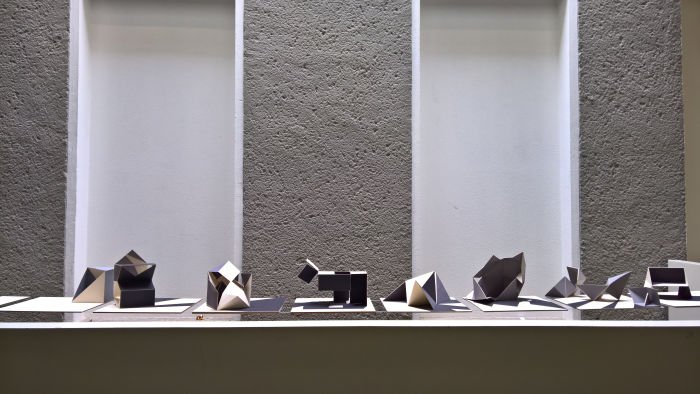
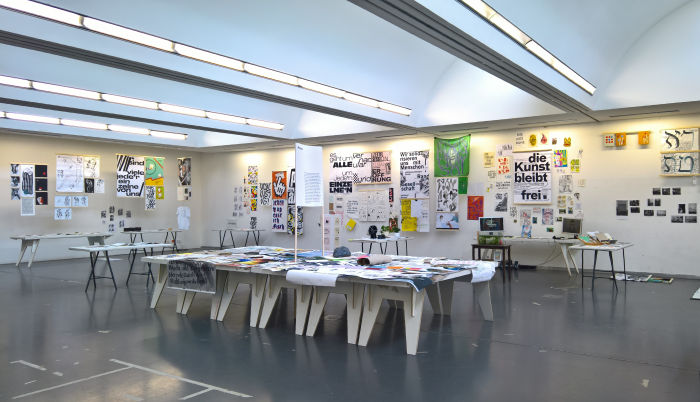
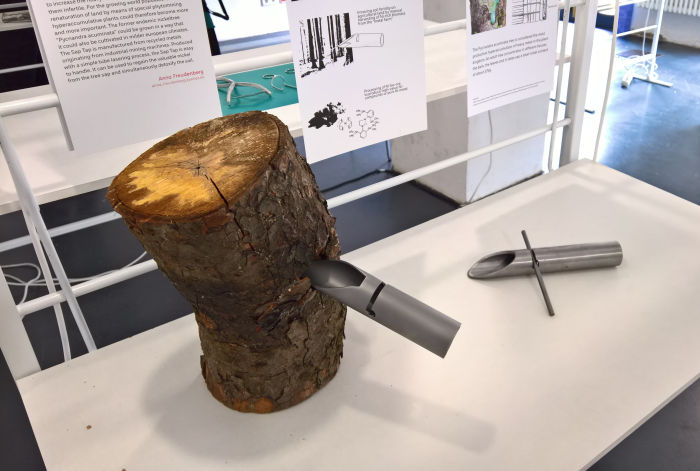
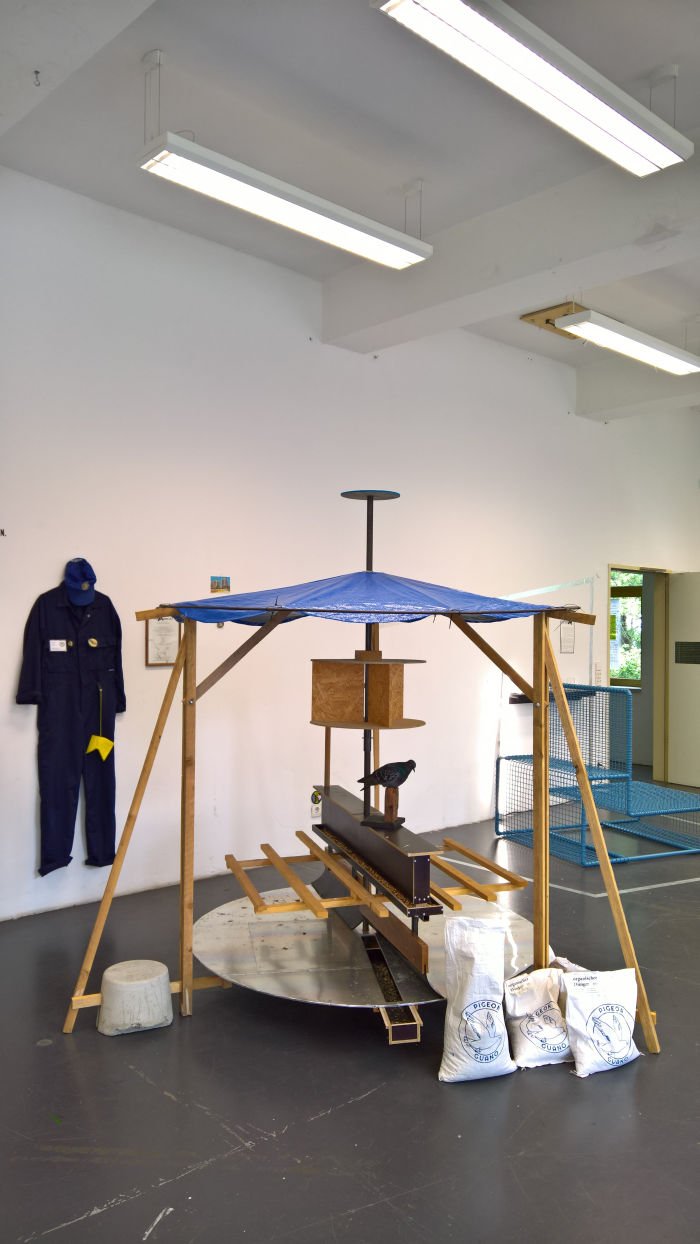
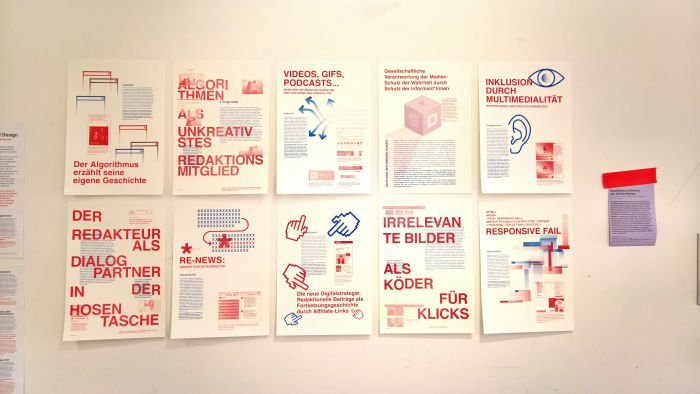
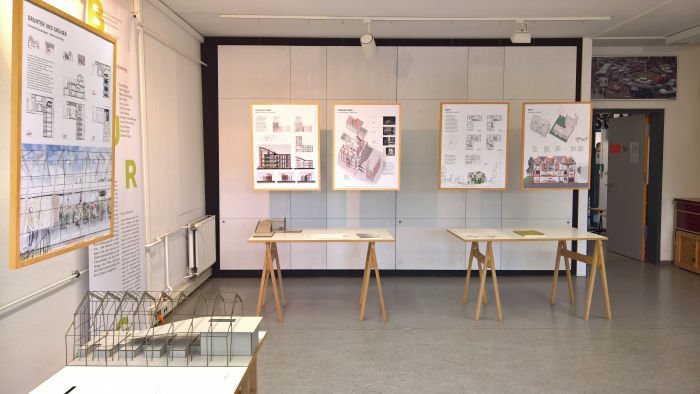
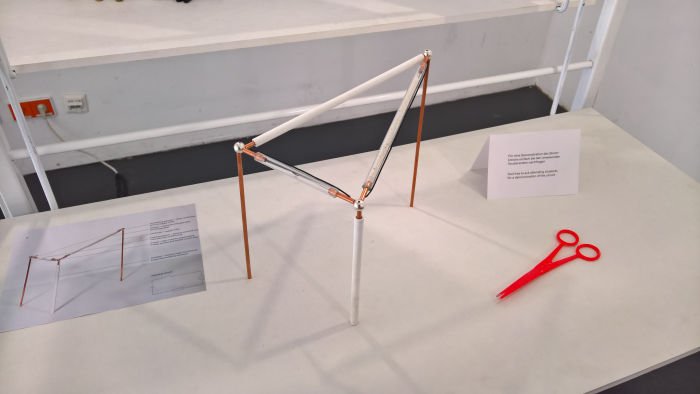
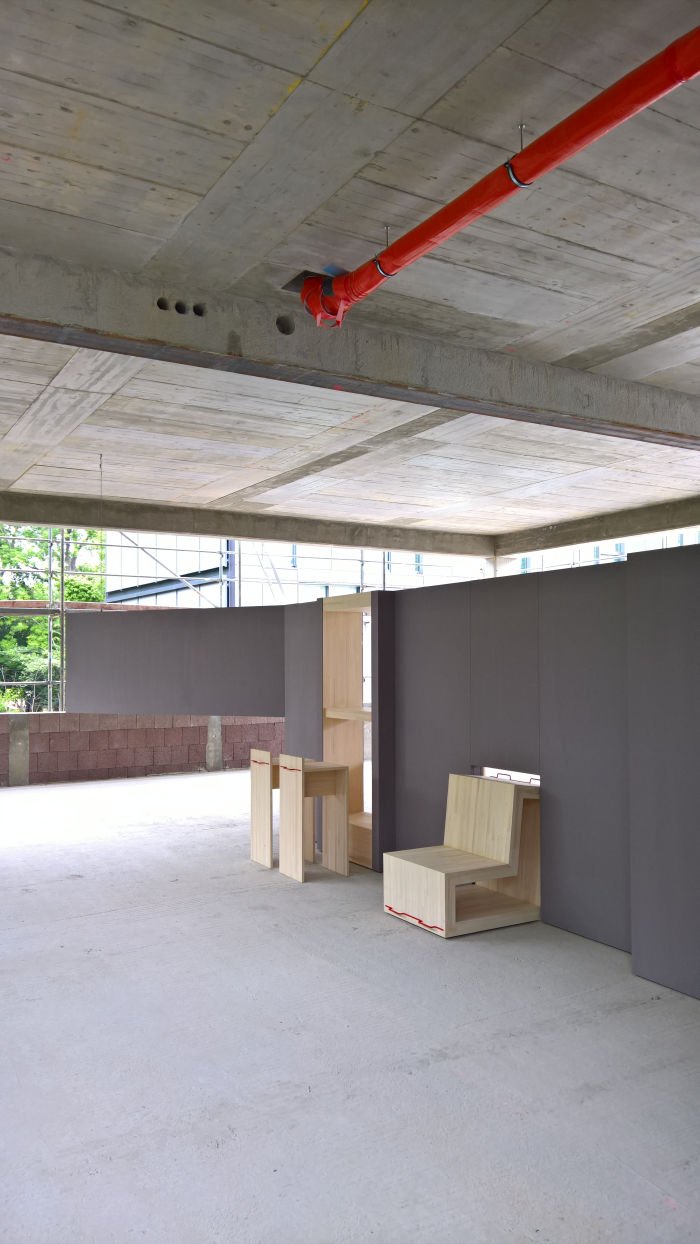
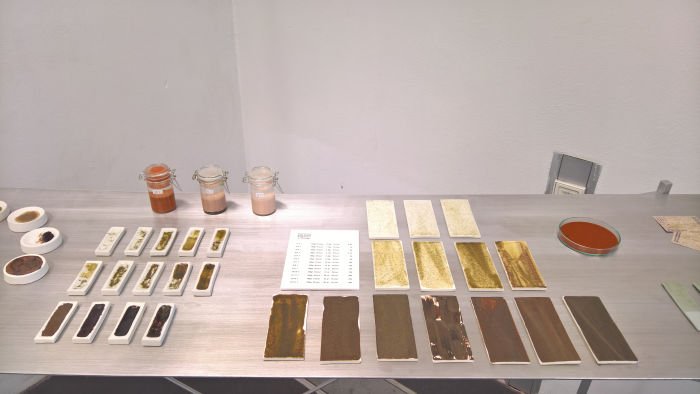
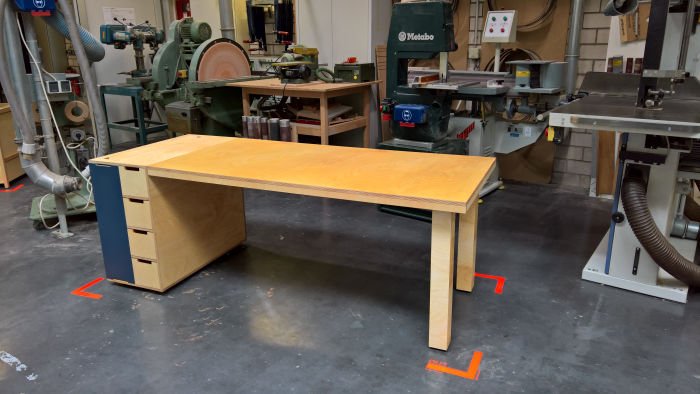
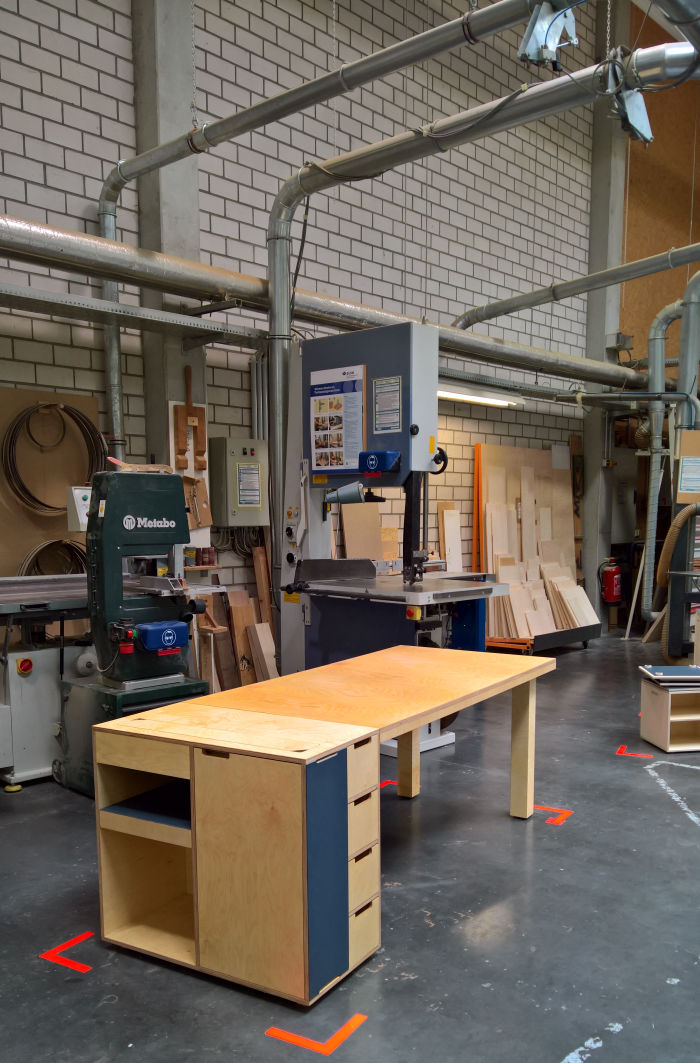
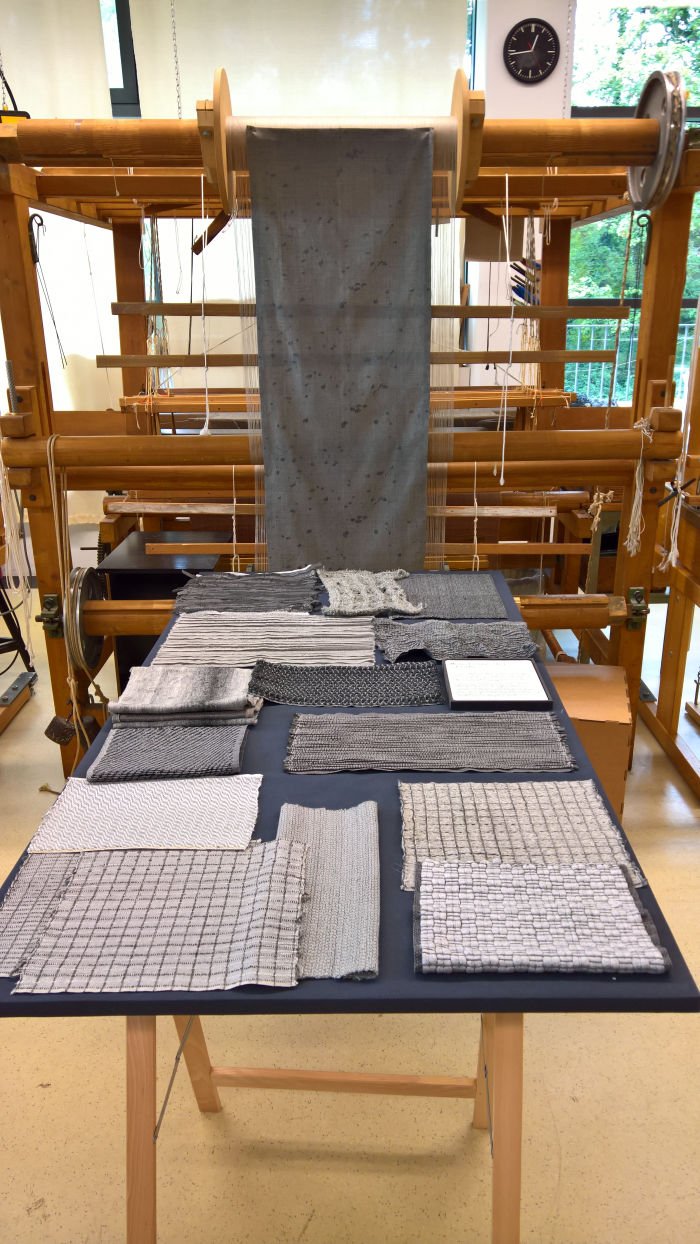
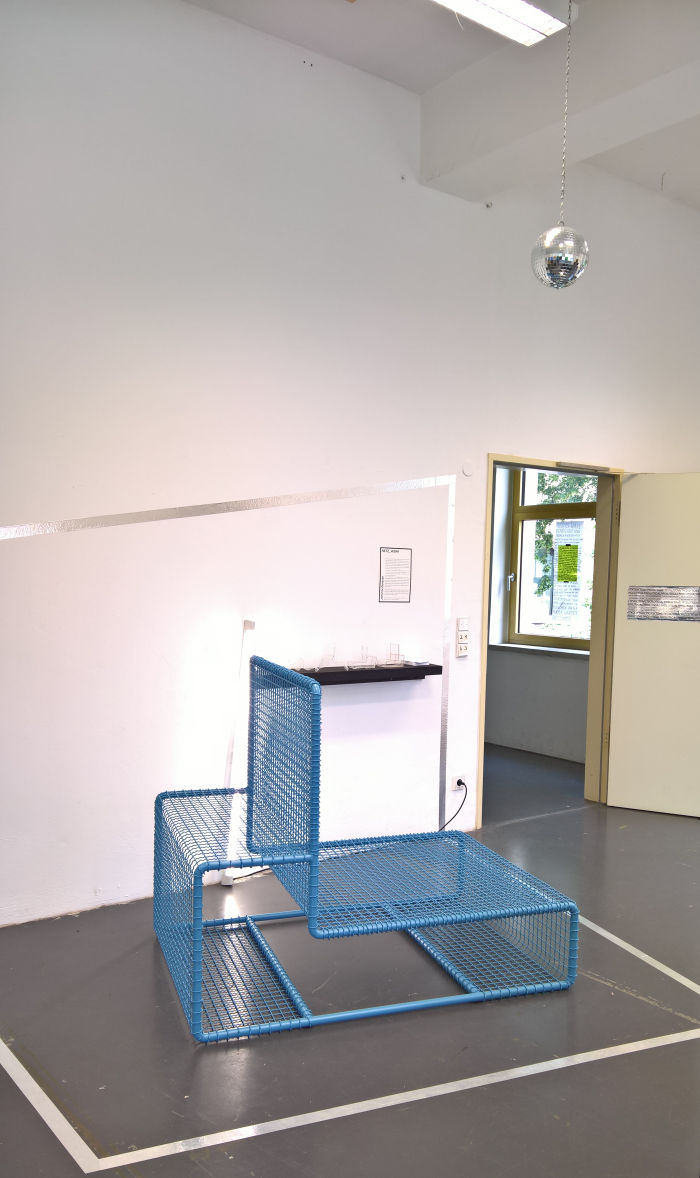
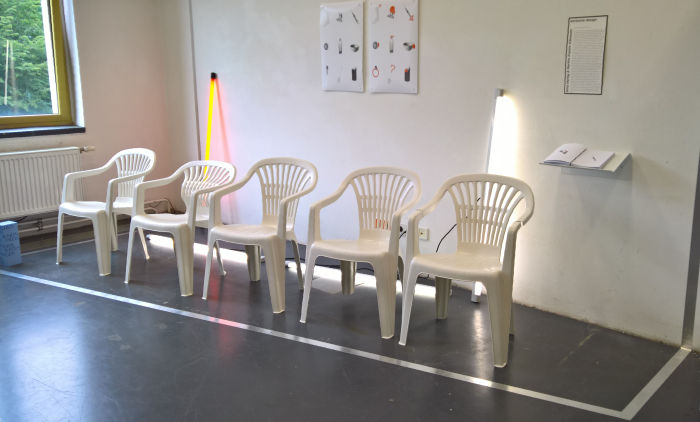
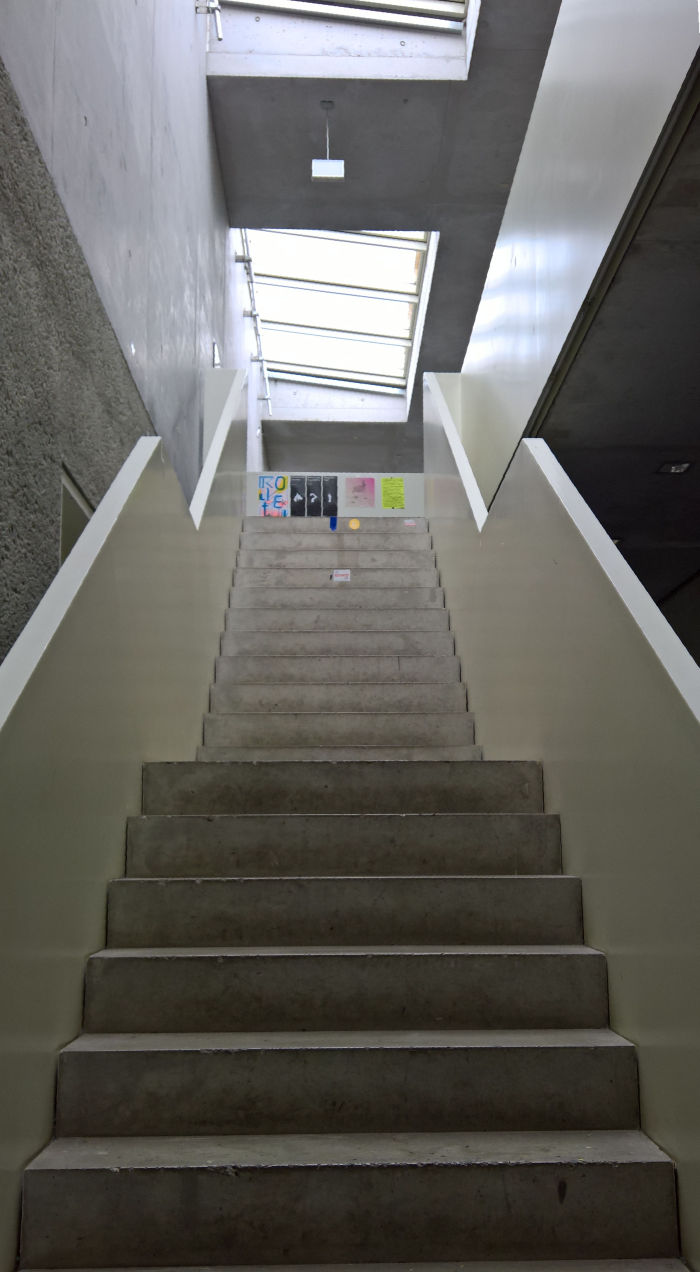
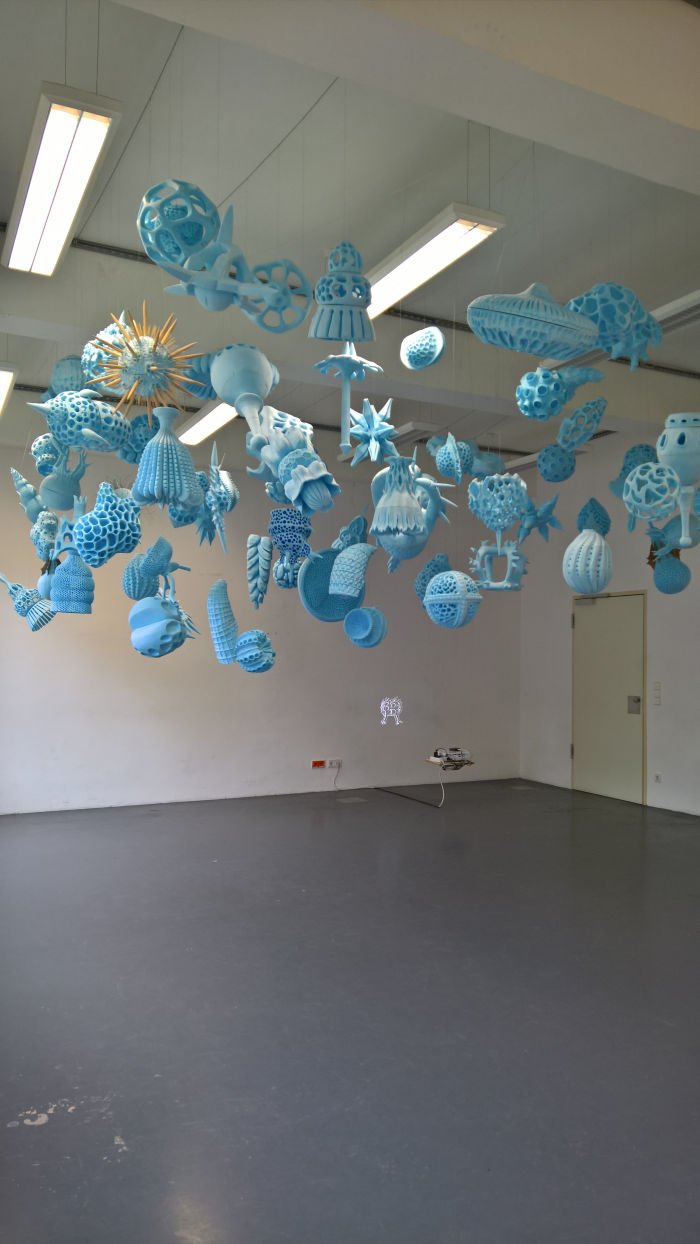
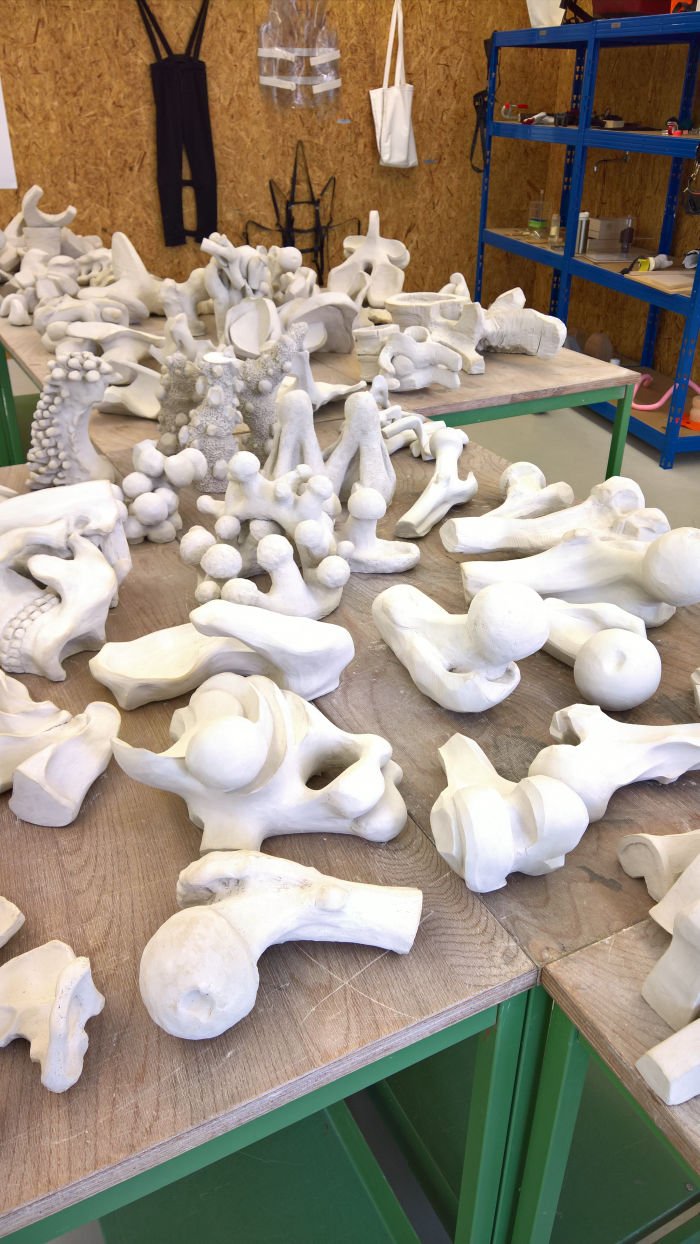
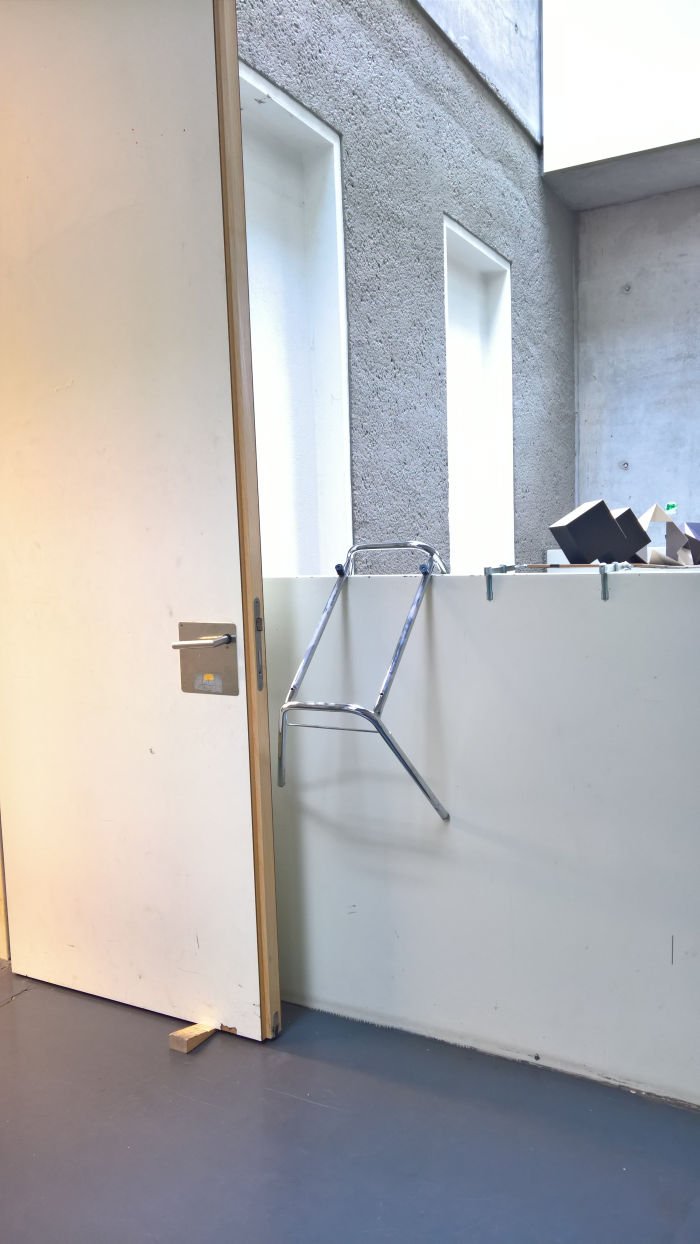
Established in 2010 the Kompetenzzentrum Gestalter im Handwerk Halle is the youngest member of the German wide (+ Zürich) Gestaltung im Handwerk network of institute's offering studies in design theory, practice and thinking for craftsfolk, and thereby not only allowing for an extension of the understanding of the craft professions, but also underscoring the links between craft and design, that, in many regards, design arose from craft. And that craft can still inform design just as much as design can inform craft.
A three year, part time, course, open to trained craftsfolk of all trades, the Gestalter im Handwerk studies in Halle encompass subjects as varied as, and amongst others, colour theory, art history, rhetoric or law, in addition to more practical design disciplines, the latter of which are (as of time of writing) taught exclusively by Burg Giebichenstein graduates, thus not only making good use of the reserves of design talent in Halle, but also reminding us that before it was Burg Giebichenstein it was the Handwerkerschule Halle.
The 2019 graduation showcase presented eight projects from which, and without in any sense denigrating the others, we were particularly taken by Marcus Romisch's wooden block puzzle/game/promoter of idling kvadro, and by Rüdiger Hartung's considerations on dance as a source of inspiration for furniture design. One of several projects exploring the dance/furniture interface we met in the course of our 2019 #campustour, a project which began with motion studies of dance moves, studies which Rüdiger subsequently translated into objects, largely shelving-esque constructions. And that for us most satisfyingly in a couple of renderings of potential units, very engaging propositions with, at least in the renderings, a genuine abstract dynamic, an aura of movement in the sense of freedom of use rather nomadicity. As ever, a rendering should never be confused for a reality, but it would certainly appear worth exploring if the translation from rendering to object, from 2D to 3D, can be successfully completed. Whereby we suspect the material is arguably going to be decisive.
Further information on the Kompetenzzentrum Gestalter im Handwerk Halle can be found at www.kgh-halle.de
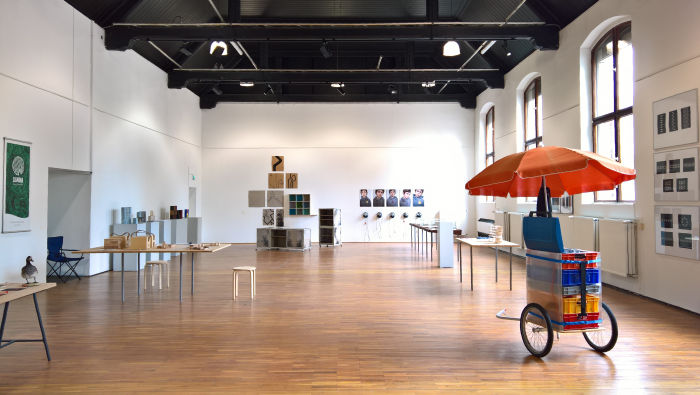
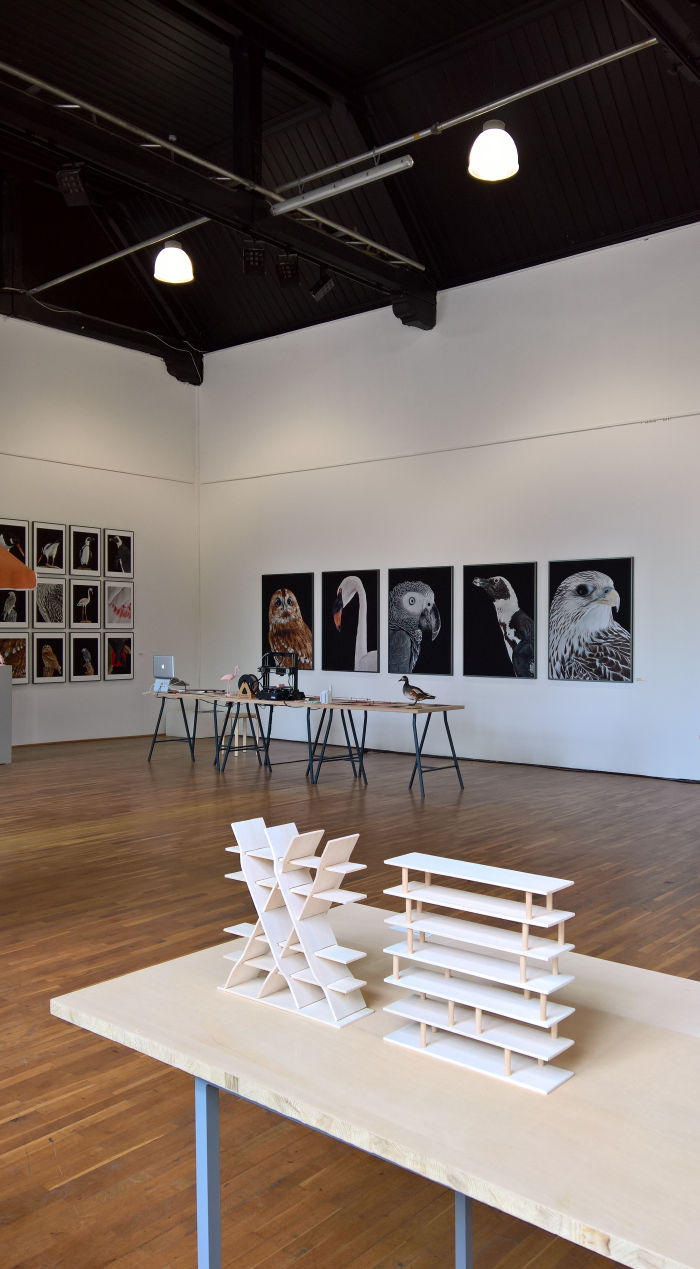
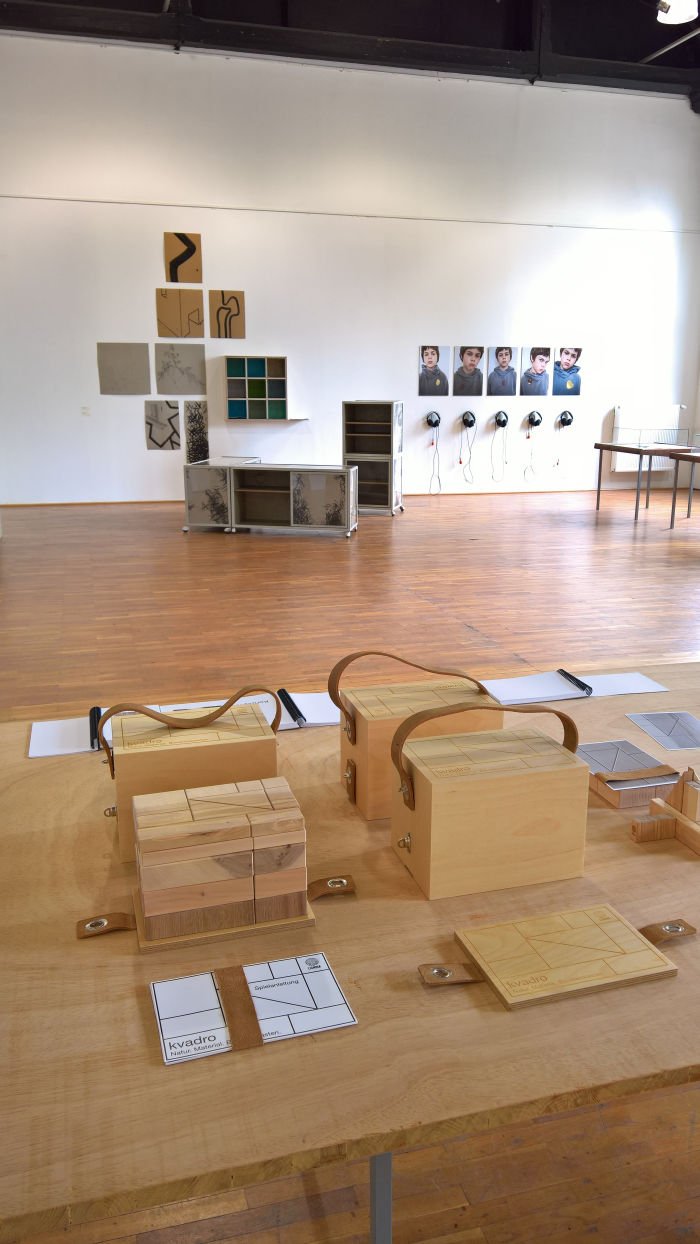
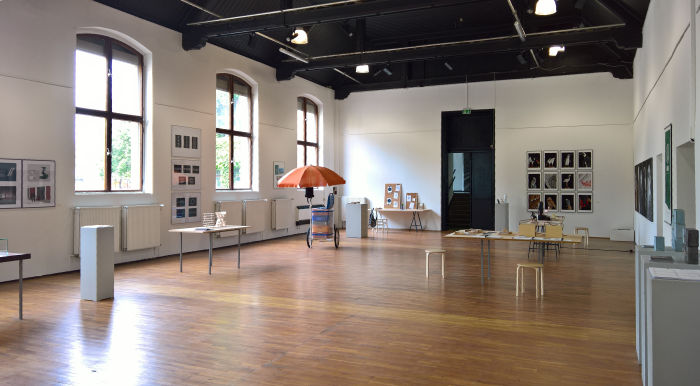
Technically a visit to the Bauhaus University Weimar Summaery exhibition is a high point of any campustour, and no not just because it allows us to complain that it wasn't particularly Summaery. Especially so this year. It was very Autumnaery, And very, very wet.
Yet regrettably this year, of all years, Weimar was one of the low points.
To cut a long story short, back in 2011 the German public TV station ZDF initiated a series of ZDF@Bauhaus concerts, originally in Dessau but following disagreements over the inclusion of the, lets say, left of centre orientated band, Feine Sahne Fischfilet, the series moved to Weimar. A reverse Bauhaus, if you will. So far, so unspectacular.
Sadly ZDF decided to broadcast a concert from Weimar on the opening evening of Summaery 2019.
And Bauhaus University, inconceivably, agreed.
Meaning not only that the Weimar campus, and it ain't big, became dominated by the ZDF stage, technicians and all manner of heavily tattooed security people, but the students' work became dominated by an act of location marketing and corporate PR.
An end of term exhibition can and must only be about the students and their work, about celebrating what has been achieved in the school by its students in the year past, and looking forward to what the graduates will achieve once they've left the school. And while yes a school can, should, must use a summer exhibition to attract new students, to promote its strengths and competencies, that should never, ever, be allowed to become an event dislocated from the students, but must always be an occasion with the students at its centre.
Weimar is small, but big enough for ZDF to find another location. Or do it another day, the bands involved had no connection with the town, the school, Bauhaus, anything. They could, should, have done it another day, or in another location, rather than exploiting an occasion that wasn't their's to exploit. Summaery belongs to the students not ZDF, and the university should have made that very clear.
The sign "Konsummary" hanging from one of the architecture buildings being about right: an end of term exhibition sold cheaply. And from the conversations around the campus an unhappiness widely felt amongst the students. And rightly so, it was an absolutely shocking state if affairs.
Mit dem Zweiten sieht man besser. Not always. Sometimes the Zweiten can blind itself. We've rarely been so angry. Absolutely furious we were. Furious!
However, while we will always defend with all that is sacred to us, the primacy of students at an end of year exhibition ........... that does by necessity assume the students can be bothered showing you their work. Which sadly not all the Weimar students felt a need to.
As we've noted a couple of times thus far on our 2019 #campustour, and will do again real, real, soon; while we readily accept that during an exhibition's advertised opening hours situations will arise when works/presentations can't be viewed, we're finding it increasingly rude and disrespectful not to offer an explanation. You take a piece of paper, a pen and write a note explaining why this or that isn't accessible, and if/when it will be. Don't just place chairs in front of doorways and turn the lights off. If you don't want to show your work, don't. Don't make as if you want to. That's just wasting everybody's time. Thus despite the fact the presentation of the results of the research project Mythos Bauhaus was set-up and good to go, we didn't get to see how the Weimar students answered the question as to how revolutionary Bauhaus really was. Or how gender equal. Or how much of the Bauhaus Legend is Bauhaus Myth. Similarly the class Potentials of Biocement. Set-up. Good to go. Closed. And so what are those potentials of biocement as developed by Weimar students. ???
Then there was, and particularly distressing, Anschluss - Collaborate. As we note every year, a staple of the course of studies in Weimar is a 2nd semester class which challenges students to develop a desk/workplace and an associated accessory. It always has a different name, a different focus, a different industry partner, but the same vigour and excitement, is a class that always underscores just what an under developed genre desk design is, and is one of our #campustour highlights. And a presentation that was still being assembled throughout the opening evening. We were far, far too cheesed off by other events to inquire as to why, but then the why isn't important. It wasn't ready when it should have been. A state of affairs which genuinely saddened us, we're genuinely invested in this, but which also perfectly summed up the unparalleled disaster that was our visit to Summaery 2019.
We would say we wish we hadn't bothered, and at moments on that Thursday evening caught between security personnel, an all dominating stage that embodied a uncontrollable arrogance, and inaccessible student showcases, we genuinely wished we hadn't, but.......
......in the past couple of years we've tended to skip quite quickly through the Weimar graduation projects, there having been little to grab our attention and slow us down. 2019 was different. We were fully engaged with and by the graduation project showcase, the neatly titled ∽100, a title which on the one hand plays with the approximation between Bauhaus Weimar 1919 and Bauhaus Weimar 2019, but also that the projects on show were realised in ∽100 days. Whereby we hope, trust, that something of the previous ∽7 semesters also played a role. Not that they were cobbled together at the last minute. Which, no, wasn't the impression we got. Projects such as, and amongst many others, Leon Konnert's Wide_Cane which proposes a digital cane for the blind that provides information via vibrations; ca!re in which Julian Breitschmid considered how urban air quality measurements can be presented, and in doing so created with his moss covered cones a form of protest as much as display; or Oval & On by Katharina Bartholomäus which sought/seeks to encourage us all to move more through a series of urban interventions, if you will, to promote a little gentle rocking and shaking while waiting for the bus all giving the impression of being anything but ∽.
Buses, more accurately bus stops, played a role in Anne Groß's bachelor project Etappe, which considered lonliness in old age and by way of a counter measure developed urban furniture which not only allows, what our America cousins would call seniors, to take short breaks while out and about, to break a trip into short Etappen, stages, but which through the seats interconnectivity encourages communication between the seated. And thus objects aimed at seniors but easily applicable to all. With her project Ein Kofferraumladung an Grundeinrichtung Eileen Krüger considered mobility on a slightly larger scale, namely the contemporary worker on an endless chain of short term contracts, and the question of furniture which is as mobile as the job market. A question Eileen answered with the so-called Kulturkonfekt collection: a bed, chair, desk and shelving, based around steel tubing, which can be readily assembled/disassembled and is tailored for the average estate car. And a collection which, and as with the similarly mobile furniture project NEST [Nomadic Essentials for Easier Transitions] by Désirée Malessa at Maastricht Academy of Fine Arts and Design, in addition to making sense as a collection, produced some interesting, potential, stand alone objects. Whereby again the bed particularly appealed to us: a neatly scaled and proportioned low-down futon stylee object with a very logical metal frame and stupidly simple, intuitive, assembly/disassembly concept.
Among the results of the numerous semester projects, or at least those not locked away from the prying eyes of Summaery visitors, with her independent project Griff Insklo, Hanni Nguyen realised one of the best titled projects we encountered all summer, certainly on a par with the glorious piPE by Marie Scheurer at the UdK Berlin, and also toilet based project, namely a redesign of that most glamorous of objects: the toilet brush. As we oft note, it is invariably such mundane, easily overseen objects that are most in need of a contemporary re-imaging, for all when as Hanni proposes the changes should make the object more environmentally responsible, specifically a toilet brush with porcelain handle and exchangeable head. And thereby not only reducing the waste from the inevitable change of the toilet brush, but increasing our perception of the value of the object, rescuing it from the "throw-away" category. While from the class Guilty Pleasures which, as the title implies, sought expressions of the joy in that which is normally frowned upon, Adah Griessbach sought with Less is More, possibly More is Less, was a little confusion in the text, to encourage us all to take more breaks, to appreciate and understand that in terms of work, productivity, pauses help. Less Work ≘ More Productivity. More Pauses ≘ Less Distraction. Something we all need to learn, and which we'll start practising right now........
Further information on the Bauhaus University Weimar can be found at www.uni-weimar.de
